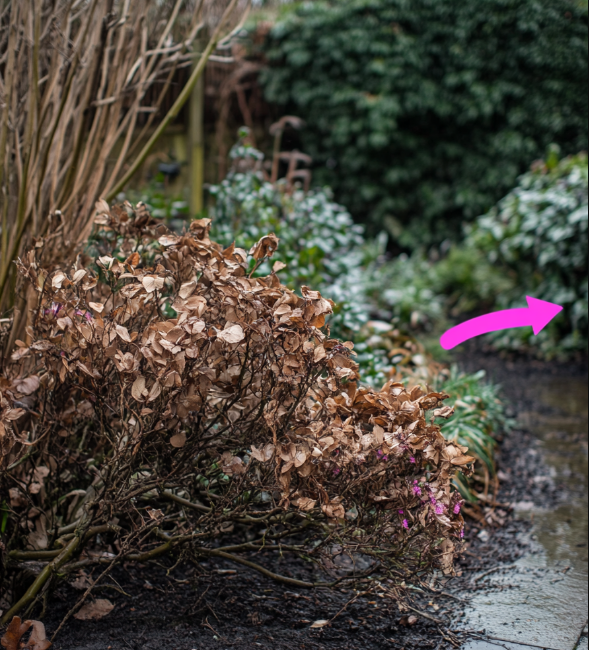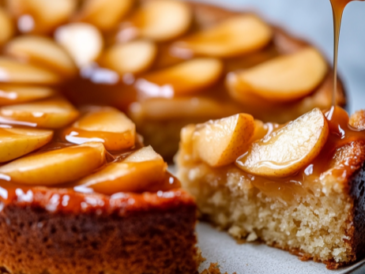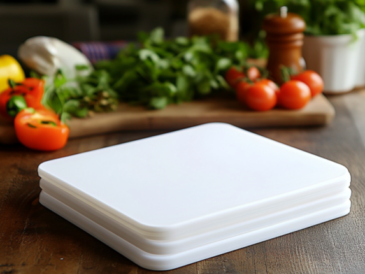Hydrangeas are beloved for their vibrant, colorful blooms and ability to add elegance to any garden. As the growing season winds down, caring for these plants during the fall becomes crucial to ensure a healthy, stunning display next spring. While there are a few essential tasks to prepare your hydrangeas for winter, one misstep can cause significant damage. 🛑
In this guide, we’ll walk you through what not to do with your hydrangeas in the fall, followed by four key actions that will set them up for success when warmer weather returns. 🌿
🚫 The One Job You MUST NOT Do: Pruning in the Fall
One of the biggest mistakes gardeners make with hydrangeas in the fall is pruning them. It may seem logical to tidy up your garden before winter, but with hydrangeas, timing is everything! ⏳
Why You Shouldn’t Prune in the Fall
Hydrangeas like Bigleaf (Hydrangea macrophylla) and Oakleaf (Hydrangea quercifolia) set their flower buds for the next year on old wood. These buds begin forming in late summer or early fall, and if you prune at this time, you risk cutting off the buds that will produce next year’s flowers! 🌸
Not only will pruning remove next year’s blooms, but it also makes the plants more vulnerable to frost damage. 🌬️ Instead, wait until after your hydrangeas bloom in spring or early summer before considering any significant pruning.
📝 Pro Tip: Mark your calendar for post-bloom pruning next year to avoid accidental damage. Your hydrangeas will thank you with a profusion of blossoms! 🌺
🌿 Four Things You Really Should Do to Your Hydrangeas in Fall
While pruning is off the table, here are four essential tasks you should focus on to help your hydrangeas thrive through the winter. Follow these steps to ensure your plants return strong and beautiful next season! 🌸🌿
1. Clean Up Fallen Leaves and Debris 🍂
As the autumn season progresses, your garden may become cluttered with fallen leaves and debris. It’s crucial to clean up around your hydrangeas to prevent diseases and pests from overwintering in the soil. 🐞
- Why it’s important: Decaying organic matter can harbor harmful insects, mold, and mildew, which can weaken your hydrangeas over the colder months.
- How to do it: Gently remove any fallen leaves, twigs, or dead plant material from around the base of your hydrangeas. You can also rake the soil lightly to aerate it and improve drainage. 🌱
This simple step can greatly reduce the chances of pests or diseases taking hold. Your hydrangeas will have a fresh start come spring! 🌷
2. Mulch the Base 🛏️
Mulching is one of the most important things you can do for your hydrangeas in the fall. A thick layer of mulch helps insulate the roots and keep the soil temperature consistent. 🌡️
- Why it’s important: Hydrangea roots are particularly vulnerable to frost damage during sudden temperature drops. Mulching prevents the roots from freezing by providing a protective layer.
- How to do it: Apply a 2-3 inch layer of mulch (pine bark, straw, or shredded leaves work well) around the base of the plant. Be sure to leave a little space around the stem to avoid moisture buildup and rot. 🛡️
Mulching will give your hydrangeas a much better chance of surviving the cold months with minimal damage.
3. Water Thoroughly Before the First Frost 💧
Hydrangeas, like most perennials, need plenty of moisture before winter sets in. Well-hydrated plants are more resilient and better equipped to survive freezing temperatures. ❄️
- Why it’s important: Dry soil can exacerbate root damage in freezing weather. Hydrangeas that have been watered thoroughly before the ground freezes are far more likely to stay healthy over winter.
- How to do it: Water your hydrangeas deeply in late fall, making sure the moisture reaches the roots. This is especially important for younger plants that haven’t yet developed deep, strong root systems. 🌱
Your hydrangeas will enter dormancy with the hydration they need to come back lush and vibrant in the spring. 💦
4. Protect the Stems with Burlap or Fleece 🧣
For those living in colder climates, providing extra protection for your hydrangea stems can prevent frost damage. Wrapping the stems in a breathable material like burlap or fleece shields them from cold winds, frost, and heavy snow. 🌬️
- Why it’s important: Hydrangea stems, especially those of varieties that bloom on old wood, are vulnerable to frost damage, which can cause dieback. Protecting the stems ensures healthy new growth in spring.
- How to do it: Gently wrap the hydrangea stems in burlap or fleece, securing it with twine. Be sure to avoid plastic, as it can trap moisture and cause rot. 🌿
This step provides added insurance that your plants will emerge unscathed and ready to bloom when the temperatures rise again. 🌞
🌟 Bonus Tip: Don’t Overfeed Your Hydrangeas in the Fall!
Fertilizing hydrangeas in the fall encourages new growth, which is more susceptible to frost damage. Hold off on fertilizing until early spring when the plants are ready to grow again. 🌱
Hydrangea care doesn’t stop here! On the next page, discover more expert tips to help your garden flourish, and learn about some common hydrangea varieties that may surprise you with their unique growing needs. Click below to keep reading and ensure your hydrangeas stay healthy and happy all year round! 🌸🌿
🌼 Continue Reading: Secrets to Perfect Hydrangea Care for All Seasons! 🌼
Secrets to Perfect Hydrangea Care for All Seasons! 🌸🌿
Now that you’ve learned what not to do with your hydrangeas in the fall and the crucial steps you should take, let’s dive even deeper into hydrangea care. These beautiful plants are resilient, but they do have some specific needs that vary based on their type and the time of year. Understanding these details will help you get the most out of your hydrangeas, no matter the season. 🌼
🌿 Understanding Different Hydrangea Types: A Year-Round Approach
Hydrangeas come in several varieties, each with unique growth patterns and care requirements. Knowing what type of hydrangea you have can make all the difference in ensuring proper care. Here are some of the most common types and tips on how to treat them year-round.
1. Bigleaf Hydrangea (Hydrangea macrophylla) 💧
Bigleaf hydrangeas are known for their large, round flower heads and ability to change color depending on soil pH (blue in acidic soils, pink in neutral to alkaline soils).
- Spring/Summer Care: Water them consistently, especially during dry spells. To control color, amend the soil as needed with lime (for pink) or sulfur (for blue).
- Fall/Winter Care: Avoid pruning in the fall, as these hydrangeas bloom on old wood. Apply mulch and protect the stems as discussed earlier.
2. Oakleaf Hydrangea (Hydrangea quercifolia) 🍂
Oakleaf hydrangeas have beautiful foliage that turns red and purple in the fall, adding extra interest to your garden even after the blooms have faded.
- Spring/Summer Care: These plants prefer drier conditions than Bigleaf hydrangeas. Make sure they are planted in well-draining soil, and water them sparingly.
- Fall/Winter Care: Like Bigleaf, Oakleaf hydrangeas bloom on old wood, so avoid fall pruning. Protect the roots and stems with mulch and burlap if your region experiences harsh winters.
3. Smooth Hydrangea (Hydrangea arborescens) 🌿
Smooth hydrangeas, such as the popular ‘Annabelle’ variety, bloom on new wood. This means you can prune them back in late winter without fear of losing next year’s blooms. They also tend to tolerate colder climates better than some other varieties.
- Spring/Summer Care: Prune back deadwood and encourage new growth with early spring fertilization.
- Fall/Winter Care: While these hydrangeas are more cold-hardy, mulching is still recommended to protect the root system.
4. Panicle Hydrangea (Hydrangea paniculata) 🌸
Panicle hydrangeas produce cone-shaped blooms and can thrive in full sun. They bloom on new wood, making them one of the easier varieties to prune and shape.
- Spring/Summer Care: Prune them early in spring to shape the plant and encourage healthy new growth. These hydrangeas tolerate more sun than other varieties, but still appreciate consistent watering.
- Fall/Winter Care: After blooming, you can remove faded flowers if desired, but heavy pruning should wait until late winter or early spring.
🌞 General Hydrangea Tips for Every Season
No matter which type of hydrangea you have, here are some tips to keep them looking their best all year long!
🌸 Spring:
- Fertilizing: Hydrangeas love a good feeding in early spring. Use a slow-release fertilizer designed for flowering shrubs to give them the nutrients they need for the growing season. Avoid over-fertilizing, as this can lead to excessive foliage growth and fewer blooms.
- Pruning: This is the ideal time to prune varieties that bloom on new wood. Remove any dead or damaged branches to stimulate healthy growth.
🌞 Summer:
- Watering: Hydrangeas need consistent watering, especially during hot summer months. Aim for deep watering at the base of the plant rather than a quick surface-level splash. This encourages the roots to grow deeper and become more drought-tolerant.
- Pest Control: Keep an eye out for pests such as aphids and spider mites. A simple blast of water from a hose can often dislodge these pests without the need for chemicals. 🌿
🍁 Fall:
- Mulching: As discussed, mulch your hydrangeas to insulate their roots through the winter. Choose organic materials like straw, pine needles, or bark mulch.
- Watering: Give your plants a final deep watering before the ground freezes to ensure they’re properly hydrated.
❄️ Winter:
- Protection: Depending on your climate, you may need to protect your hydrangeas from frost. Wrapping them in breathable materials like burlap can help prevent dieback in harsh winters.
- Planning: Use the winter months to plan any major changes or additions to your garden. Winter is also a good time to assess how well your hydrangeas performed in the past year and what you can do to improve their health for the next growing season.
🌼 Hydrangea Myths and Misconceptions
Let’s debunk some common myths about hydrangeas to ensure you’re providing the best care possible! 🌸
❌ Myth 1: Hydrangeas Must Be Pruned Every Year
This myth often leads to unnecessary pruning, which, as we’ve learned, can result in lost blooms. Only prune your hydrangeas based on their specific variety and blooming cycle.
❌ Myth 2: Hydrangeas Don’t Like Sun
While some hydrangea varieties prefer partial shade, others, like Panicle hydrangeas, thrive in full sun. Make sure to match the right hydrangea type to your garden conditions.
❌ Myth 3: Hydrangeas Don’t Need Fertilizer
Hydrangeas do benefit from fertilizer, but overfeeding them can lead to lush foliage at the expense of flowers. Use a balanced fertilizer in moderation during the growing season. 🌿
🌟 Wrap-Up: Your Hydrangeas Can Thrive Year-Round!
By now, you’ve learned that hydrangea care isn’t complicated, but it does require some specific attention to detail based on the season and the type of hydrangea. From avoiding fall pruning to insulating your plants with mulch, these simple yet essential steps will keep your hydrangeas healthy and bursting with blooms. 🌸
For even more gardening tips and insights, be sure to check out our other guides on year-round plant care! Whether you’re looking to improve your flower beds or explore new plant varieties, we’ve got you covered with expert advice that will help your garden flourish. 🌿🌺




